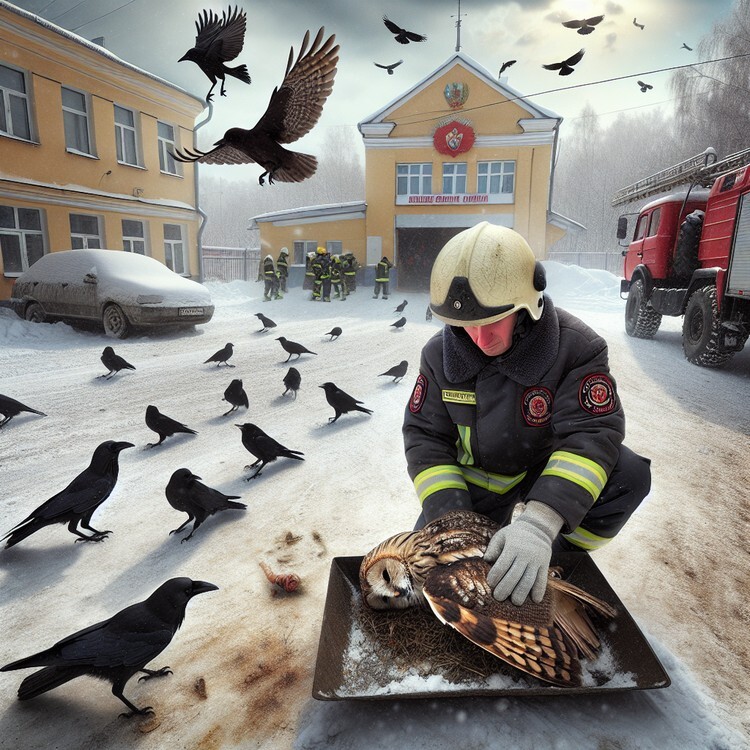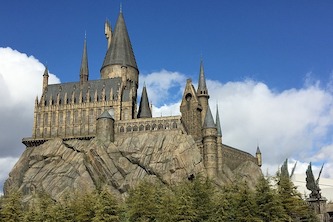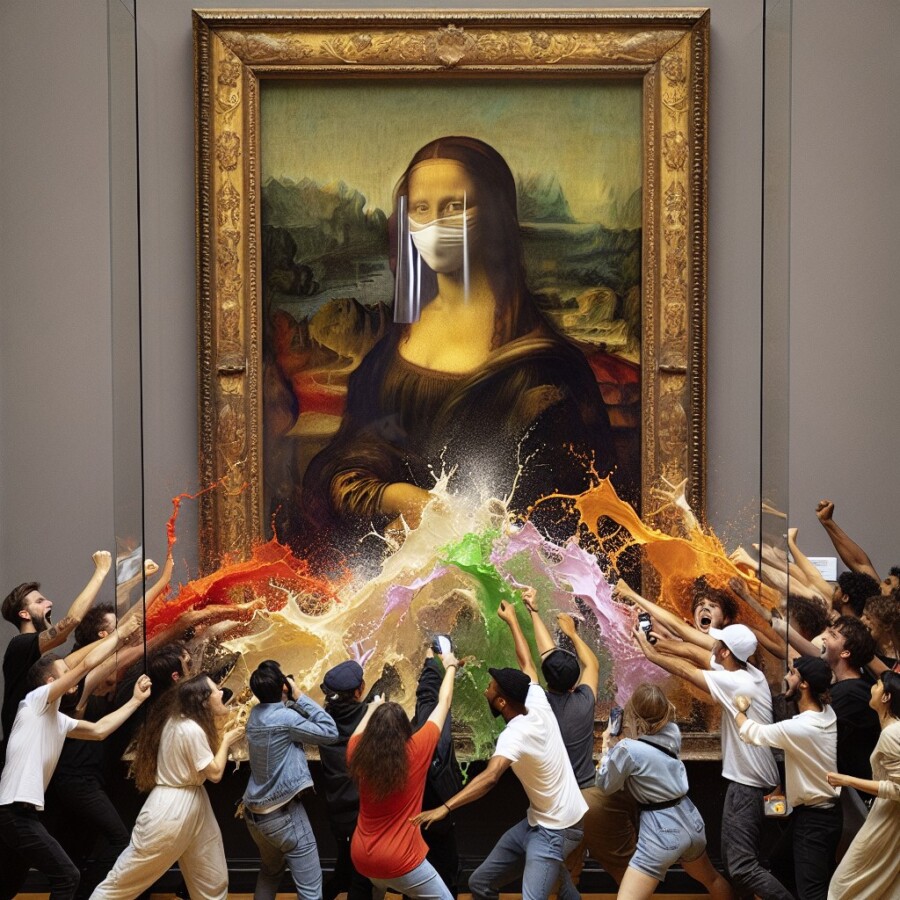The Spanish ship San José sank off the coast of Colombia in 1708. It carried gold, silver, and emeralds worth billions of dollars. Many groups want to own this treasure, including the Colombian government, Spain, a US company, and indigenous groups. They are arguing about it in court.
The San José was sunk by the British over 300 years ago. Colombia wants to put the treasure in a museum to show its history. Treasure hunters want to sell the treasure for money. Some people think the ship should stay underwater because it is a grave for 600 people who died.
There are many shipwrecks like the San José in the ocean. People argue about who owns these treasures. International laws about shipwrecks are not very clear. The argument about the San José continues, with some wanting to keep it as history and others wanting to sell the treasure.
Original news source: The fierce battle over the ‘Holy Grail’ of shipwrecks (BBC)
🎧 Listen:
Slow
Normal
Fast
📖 Vocabulary:
| 1 | sank | Went down under the water |
| 2 | emeralds | Green gemstones |
| 3 | indigenous | People who are native to a place |
| 4 | arguing | Disagreeing or fighting with words |
| 5 | museum | A place where important things are shown to people |
| 6 | treasure | Valuable things like gold and jewels |
| 7 | hunters | People who search for something |
| 8 | grave | A place where dead people are buried |
| 9 | shipwrecks | Ships that have sunk in the ocean |
| 10 | international | Involving many countries |
| 11 | laws | Rules made by a government |
| 12 | continues | Keeps going on without stopping |
Group or Classroom Activities
Warm-up Activities:
– Charades
Instructions: Write down key words related to the article on small pieces of paper (e.g., shipwreck, treasure, museum, court, history). Have students take turns choosing a word and acting it out without speaking while the others guess what it is.
– News Summary
Instructions: In pairs, have students summarize the article in their own words. Encourage them to include key details such as the main events, different groups involved, and the main arguments presented. Then, have pairs share their summaries with the class.
– Vocabulary Pictionary
Instructions: Write down key vocabulary words from the article on the board (e.g., emeralds, treasure hunters, shipwrecks). Have students take turns coming to the board to draw a quick sketch representing the word while their classmates try to guess what it is. This activity will help reinforce vocabulary retention.
– Opinion Poll
Instructions: Divide the class into small groups and assign each group a different perspective from the article (e.g., Colombian government, treasure hunters, indigenous groups). Have students discuss and come up with reasons to support their assigned perspective. Then, conduct a class poll to see which perspective has the most support.
– Pros and Cons
Instructions: As a class, brainstorm a list of pros and cons related to the different arguments presented in the article (e.g., putting the treasure in a museum, selling the treasure for money, leaving the shipwreck untouched). Have students discuss and debate these points in pairs or small groups, considering different viewpoints.
🤔 Comprehension Questions:
1. What sank off the coast of Colombia in 1708?
2. What valuable items did the Spanish ship San José carry?
3. Why are many groups, like the Colombian government and Spain, arguing about the San José treasure?
4. How did the San José sink over 300 years ago?
5. Why does Colombia want to put the San José treasure in a museum?
6. Why do some people think the ship should stay underwater?
7. Why are there arguments about who owns shipwrecks like the San José?
Go to answers ⇩
🎧✍️ Listen and Fill in the Gaps:
The Spanish ship San (1)______ sank off the (2)______ of Colombia in 1708. It carried (3)______, silver, and emeralds worth billions of dollars. Many groups want to own this treasure, including the Colombian government, Spain, a US company, and indigenous groups. They are arguing about it in court.
The San José was (4)______ by the British over 300 (5)______ ago. Colombia (6)______ to put the treasure in a museum to show its history. Treasure hunters want to sell the treasure for money. Some (7)______ think the ship should stay (8)______ because it is a grave for 600 people who (9)______.
There are many shipwrecks like the San José in the ocean. People argue about who owns these treasures. International laws about (10)______ are not very (11)______. The argument about the San José (12)______, with some wanting to keep it as history and others wanting to sell the treasure.
Go to answers ⇩
💬 Discussion Questions:
Students can ask a partner these questions, or discuss them as a group.
1. What is a shipwreck?
2. How would you feel if you found a treasure at the bottom of the ocean?
3. Do you think it’s important to preserve history? Why or why not?
4. Do you like going to museums? Why or why not?
5. What do you think should happen to the treasure from the San José?
6. How would you feel if you were a treasure hunter looking for the San José’s treasure?
7. Do you think it’s right to sell treasures from shipwrecks? Why or why not?
8. What is a grave?
9. How would you feel if you knew a shipwreck was also a grave for people who died?
10. Do you think it’s fair for different groups to argue over who owns the treasure? Why or why not?
11. What would you do if you found a sunken ship full of treasure?
12. Why do you think some people want to keep the San José as history while others want to sell the treasure?
Individual Activities
📖💭 Vocabulary Meanings:
Match each word to its meaning.
Words:
1. sank
2. emeralds
3. indigenous
4. arguing
5. museum
6. treasure
7. hunters
8. grave
9. shipwrecks
10. international
11. laws
12. continues
Meanings:
(A) People who search for something
(B) Involving many countries
(C) Keeps going on without stopping
(D) Went down under the water
(E) People who are native to a place
(F) Rules made by a government
(G) Ships that have sunk in the ocean
(H) Disagreeing or fighting with words
(I) A place where important things are shown to people
(J) Valuable things like gold and jewels
(K) A place where dead people are buried
(L) Green gemstones
Go to answers ⇩
🔡 Multiple Choice Questions:
1. When did the Spanish ship San José sink?
(a) 1808
(b) 1908
(c) 2008
(d) 1708
2. What valuable items did the San José carry?
(a) Diamonds, rubies, and pearls
(b) Gold, silver, and emeralds
(c) Copper, iron, and coal
(d) Oil, gas, and salt
3. Who wants to put the treasure in a museum?
(a) Colombia
(b) Spain
(c) US company
(d) Indigenous groups
4. How many people think the ship should stay underwater as a grave?
(a) None
(b) All
(c) Some
(d) A few
5. Who sank the San José over 300 years ago?
(a) Spanish
(b) British
(c) Colombian
(d) US
6. What do treasure hunters want to do with the treasure?
(a) Sell it for money
(b) Donate it to a museum
(c) Keep it underwater
(d) Bury it on land
7. What are international laws about shipwrecks?
(a) Very strict
(b) Simple and easy to understand
(c) Well-defined and clear
(d) Not very clear
8. What is the main argument about the San José treasure?
(a) Keep it underwater or bring it up
(b) Display it in a museum or bury it
(c) Keep it as history or sell it
(d) Share it among all the countries or keep it in Colombia
Go to answers ⇩
🕵️ True or False Questions:
1. People agree on who owns treasures from shipwrecks because international laws are clear.
2. The ship was sunk by the Portuguese over 300 years ago.
3. The Spanish ship San Lorenzo sank in 1708 with gold, silver, and rubies worth billions of dollars.
4. Colombia wants to display the treasure in a museum to share its history.
5. The consensus about the San José continues, with some wanting to destroy it as history and others wanting to keep the treasure.
6. There are many shipwrecks in the ocean like the San José.
7. Different groups, like the Colombian government, Spain, a US company, and indigenous groups, want to own the treasure.
8. Some people believe the ship should remain underwater as a grave for the 600 people who died.
Go to answers ⇩
📝 Write a Summary:
Write a summary of this news article in two sentences.
Check your writing now with the best free AI for English writing!
Writing Questions:
Answer the following questions. Write as much as you can for each answer.
Check your answers with our free English writing assistant!
1. What sank off the coast of Colombia in 1708 with a lot of valuable things on it?
2. Why are different groups arguing about who should own the treasure from the sunken ship?
3. Why does Colombia want to put the treasure in a museum?
4. Why do some people think the ship should stay underwater?
5. Why are there arguments about who owns treasures from shipwrecks in the ocean?
✅ Answers
🤔✅ Comprehension Question Answers:
1. What sank off the coast of Colombia in 1708?
The Spanish ship San José sank off the coast of Colombia in 1708.
2. What valuable items did the Spanish ship San José carry?
The Spanish ship San José carried gold, silver, and emeralds worth billions of dollars.
3. Why are many groups, like the Colombian government and Spain, arguing about the San José treasure?
Many groups are arguing about the San José treasure because they all want to own it.
4. How did the San José sink over 300 years ago?
The San José was sunk by the British over 300 years ago.
5. Why does Colombia want to put the San José treasure in a museum?
Colombia wants to put the San José treasure in a museum to show its history.
6. Why do some people think the ship should stay underwater?
Some people think the ship should stay underwater because it is a grave for 600 people who died.
7. Why are there arguments about who owns shipwrecks like the San José?
There are arguments about who owns shipwrecks like the San José because international laws about shipwrecks are not very clear.
Go back to questions ⇧
🎧✍️✅ Listen and Fill in the Gaps Answers:
(1) José
(2) coast
(3) gold
(4) sunk
(5) years
(6) wants
(7) people
(8) underwater
(9) died
(10) shipwrecks
(11) clear
(12) continues
Go back to questions ⇧
📖💭✅ Vocabulary Meanings Answers:
1. sank
Answer: (D) Went down under the water
2. emeralds
Answer: (L) Green gemstones
3. indigenous
Answer: (E) People who are native to a place
4. arguing
Answer: (H) Disagreeing or fighting with words
5. museum
Answer: (I) A place where important things are shown to people
6. treasure
Answer: (J) Valuable things like gold and jewels
7. hunters
Answer: (A) People who search for something
8. grave
Answer: (K) A place where dead people are buried
9. shipwrecks
Answer: (G) Ships that have sunk in the ocean
10. international
Answer: (B) Involving many countries
11. laws
Answer: (F) Rules made by a government
12. continues
Answer: (C) Keeps going on without stopping
Go back to questions ⇧
🔡✅ Multiple Choice Answers:
1. When did the Spanish ship San José sink?
Answer: (d) 1708
2. What valuable items did the San José carry?
Answer: (b) Gold, silver, and emeralds
3. Who wants to put the treasure in a museum?
Answer: (a) Colombia
4. How many people think the ship should stay underwater as a grave?
Answer: (c) Some
5. Who sank the San José over 300 years ago?
Answer: (b) British
6. What do treasure hunters want to do with the treasure?
Answer: (a) Sell it for money
7. What are international laws about shipwrecks?
Answer: (d) Not very clear
8. What is the main argument about the San José treasure?
Answer: (c) Keep it as history or sell it
Go back to questions ⇧
🕵️✅ True or False Answers:
1. People agree on who owns treasures from shipwrecks because international laws are clear. (Answer: False)
2. The ship was sunk by the Portuguese over 300 years ago. (Answer: False)
3. The Spanish ship San Lorenzo sank in 1708 with gold, silver, and rubies worth billions of dollars. (Answer: False)
4. Colombia wants to display the treasure in a museum to share its history. (Answer: True)
5. The consensus about the San José continues, with some wanting to destroy it as history and others wanting to keep the treasure. (Answer: False)
6. There are many shipwrecks in the ocean like the San José. (Answer: True)
7. Different groups, like the Colombian government, Spain, a US company, and indigenous groups, want to own the treasure. (Answer: True)
8. Some people believe the ship should remain underwater as a grave for the 600 people who died. (Answer: True)
Go back to questions ⇧













